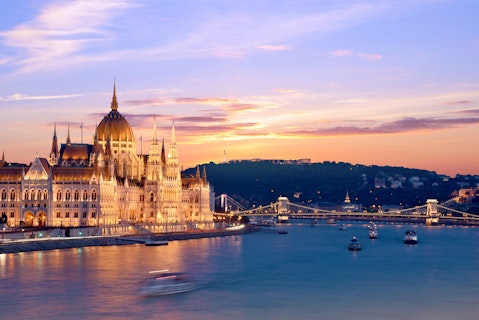In this article, we are going to discuss 15 best cities to live in Europe. You can skip our detailed analysis of the effect of Covid-19 on the European tourism economy, the impact of the Russia-Ukraine war and go directly to 5 Best Cities to Live in Europe.
From the world’s smallest country to the largest church on Earth, from the oldest restaurant in the world to a country with no mosquitoes, Europe certainly has its fascination. Home to over 400 World heritage sites and countless cultural treasures, Europe is the most popular continent among tourists. According to a report by the European Parliament, the tourism industry is a vital part of the EU economy and accounts for 10% of its GDP.
The European tourism industry comprises 2.3 million businesses, majority of which are small and medium-sized enterprises (SME’s) and employ over 12 million people directly. Job losses related to the tourism industry in 2020 were monumental and ranged between 14.2 million and 29.5 million.
Although Europe saw a dramatic decline in international tourist arrivals during the first few months of last year, things seem to be getting better as the world is finally returning to normal. According to a study by Oxford Economics, Europe saw a strong tourism rebound during the summer month of last year, as the effects of the Covid-19 pandemic subsided.
However, 2019 levels will only be achieved by 2025. A report by the European Travel Commission indicated a recovery of 75% of 2019 travel volumes to Europe in 2022. Some of the reasons for this are the excess savings and pent-up demand during the pandemic. However, slower recovery is evident in Eastern Europe due to the ongoing war in Ukraine.
Another massive hit on the European economy was caused by the energy crisis, attributed to the Russia-Ukraine war. Supplies of Russian gas, an important source of energy for the European continent, were cut by nearly 80% and prices of gas and electricity increased manifold.
Higher gas prices led to higher energy costs, which ultimately led to very high levels of inflation. According to a report by the World Bank, the ongoing fallout from the Russian invasion, high inflation and higher global interest rates are dimming prospects for the regional economy. Economic growth in the overall region is expected to fall to 1.8% in 2023, compared to 4.2% in 2022. The regional economic growth in 2023 may continue to be weaker if the conflict escalates further and food and energy prices continue to spiral out of control. There could also be spillover effects on growth from the recent developments in the US and European banking sectors.
According to the World Bank, median 12-month inflation for ECA countries peaked at 15.7% by late 2022, a 25-year high, causing a cost-of-living crisis. But an even bigger problem is that the lower segments of the society are hit the hardest, revealing an unequal burden of the crisis. Different houses face varying levels of inflation, based on their consumption patterns. Lower income households spend a much bigger share of their money on food and housing while the spending habits of higher income households are more diversified.
Due to this difference in consumption patterns, inflation was 2% higher for the 10% poorest households, compared to the 10% richest households. This difference exceeded even 5% for some countries of the region. Therefore, this evident disparity in the burden of the cost-of-living crisis should play an important role for the governments in the region, while devising policies for social assistance and subsidies.
A recent European Parliament Eurobarometer survey has revealed that the cost-of-living crisis is the most pressing worry for 93% of Europeans. 46% of the EU population say that their standard of living has already fallen due to the effects of the Covid-19 pandemic, the ongoing conflict between Russia and Ukraine and the cost-of-living crisis. Another 39% have not seen their standard of living reduced yet, but expect this to be the case in the coming year.
It has also come to light that 39% of the population is facing difficulties in paying their bills “most of the time” or “sometimes”. At the same time, the ongoing crises and the Ukraine war have, in fact, strengthened citizens’ support for the European Union: 62% see the EU membership as a “good thing”- highest figure since 2007.
According to Reuters, when the Russian energy giant Gazprom (OGZPY) announced last year in August that it would shut down natural gas supplies to Europe for three days, European shares fell to their lowest levels in a month and the continent-wide STOXX 600 fell by 1%. Uniper, Germany’s top importer of Russian gas, saw its share prices drop by 7%.
However, a report from Reuters has revealed that lower gas consumption last winter has greatly helped the EU countries to shore up their energy reserves. One factor behind the fall in demand could be the warmer-than-usual weather the continent experienced in the winter months. EU gas demand fell by more than 22% in October, November and January.
Germany, the largest gas consumer in Europe, saw a massive decline of 27% in its demand in industry, 25% among households and 12% in the power sector in January, as compared to the 2019-2021 average for the month. So although the threat of energy shortage, blackouts and cold houses in winter is over for now, perhaps it would be a good time to increase efforts towards moving away from fossil fuels and towards a greener and more sustainable future for everyone.
That said, here is a list of 15 Best Cities to Live in Europe.

Andrij Vatsyk/Shutterstock.com
Our Methodology:
To keep our list as objective as possible, we went through three different rankings. The first is Ranking Royals List of Cities With the Best Healthcare 2023 and we picked the top 50 European cities from this list. Then there is the Global Finance Index of World’s Best Cities to Live in 2022 and we picked the top cities from Europe there. Last, but not least, was the Economist Intelligence Unit’s (EIU) Safe City Index and again, we picked the top European cities from this list.
Similar to the methodology we used for our article 30 Best Cities to Live in the World 2023, we picked the cities that appeared in at least two of the above-mentioned reports and assigned a score to these cities based on their rankings in each report. For instance, there are a total of 13 European cities in the EIU index, so the #1 city will get a score of 13/13=1 and the #2 city will get a score of 12/13=0.92 and so on. The same process was repeated for the other two indexes as well and lastly, based on the reports, we determined an average score for each city and then ranked it accordingly.
15. Milan
Ranking Royals Index Score: 0.23
Global Finance Index Score: 0.12
Average Score: 0.12
Known as the fashion capital of the entire world, Milan certainly has its charm. Delicious risotto, wondrous architecture, inspiring museums and buzzing nightlife, Milan has it all. Described as a shopaholic’s paradise, Milan presents a perfect blend of modernism and tradition in Italy. The city is also home to UniCredit S.p.A, one of the largest banks in Italy.
14. Geneva
Ranking Royals Index Score: 0.34
Global Finance Index Score: 0.29
Average Score: 0.21
Located next to Lake Geneva and famous for the iconic Jet d’Eau, Geneva is the base to some of the largest organizations in the world, such as the International Committee of the Red Cross and the United Nations. While it is famous for its chocolates, Geneva is also home to some of the finest watchmaking companies in the world, such as Rolex and Patek Philippe.
13. Berlin
Ranking Royals Index Score: 0.06
Global Finance Index Score: 0.76
Average Score: 0.27
One of the most dynamic cities in Europe, Berlin depicts a perfect mix of Western European and Soviet-era architecture. There is no shortage of museums and entertainment opportunities for visitors of all ages and interests. Berlin is also home to some of the largest companies in Europe, such as Bayer AG and Siemens.
12. Brussels
Ranking Royals Index Score: 0.42
Global Finance Index Score: 0.18
EIU Safe City Index Score: 0.46
Average Score: 0.35
Famous for its waffles, chocolates and beer, Brussels has something to offer to everyone. Second only to NYC, in terms of international presence, Brussels is also the unofficial capital of the European Union. Some of the biggest multinational companies in the world, such as General Electric Company (NYSE:GE) and Pfizer Inc. (NYSE:PFE) have set up their regional offices in Brussels.
11. Barcelona
Ranking Royals Index Score: 0.68
Global Finance Index Score: 0.24
EIU Safe City Index Score: 0.31
Average Score: 0.41
Located on the Mediterranean sea and home to the marvellous architecture of Antoni Gaudi, such as the world-famous Sagrada Familia, Barcelona is one of the cultural centres of Spain. Aside from its pleasant weather and a vibrant nightlife, the city also has some of the most fascinating museums, such as the Pablo Picasso museum.
10. Vienna
Ranking Royals Index Score: 0.88
Global Finance Index Score: 0.53
Average Score: 0.47
The Austrian capital is also known as the ‘City of Music’, because no other city in the world has had such a great legacy of classical musicians as Vienna. Composers such as Beethoven, Mozart and Schubert and painters such as Gustav Klimt have called this city their home in the past. Vienna is also the base of the largest company in Austria, the Verbund AG with a market capitalization of $27.58 billion.
9. Stockholm
Global Finance Index Score: 0.65
EIU Safe City Index Score: 0.85
Average Score: 0.5
Situated on 14 islands and known as the Venice of the North, Stockholm is a city built on water. It is also home to the world’s first open-air museum and the world-famous Abba Museum. Stockholm is also the base of the telecommunication giant Telefonaktiebolaget LM Ericsson (NASDAQ:ERIC).
8. Helsinki
Ranking Royals Index Score: 0.82
Global Finance Index Score: 0.71
Average Score: 0.51
Surrounded by Finland’s immaculate natural beauty, Helsinki is the world’s northernmost metropolitan area with a population of over one million. Famous for its innovative art, techno music and underground raves, Helsinki has quite a unique subculture. The largest company in Finland, Nordea Bank, with a market cap of $37.49 billion is also based in the city.
7. Frankfurt
Ranking Royals Index Score: 0.56
Global Finance Index Score: 0.41
EIU Safe City Index Score: 0.69
Average Score: 0.55
Known for its production of high-quality sausages, Frankfurt not only has an awe-inspiring skyline but also boasts the largest inner-city forest in Germany. Famous for its arts and culture, the city is also a hub for commerce, finance and transportation. Frankfurt is also home to the leading bank in the country, Deutsche Bank Aktiengesellschaft (NYSE:DB).
6. Zurich
Ranking Royals Index Score: 0.48
Global Finance Index Score: 0.59
EIU Safe City Index Score: 0.62
Average Score: 0.56
Although it is one of the most expensive cities in Europe, Zurich has a vibrant culture, marvelous architecture and is known for its high quality of life. Being a global hub for banking and known worldwide for its financial district, the world famous Swiss investment bank, Credit Suisse Group AG (NYSE:CS) is headquartered in Zurich.
Click to continue reading and see the 5 Best Cities to Live in Europe.
Suggested Articles:
- 15 Most Tax-Friendly Countries in Europe
- 10 Easiest Countries in Europe to Get Citizenship
- 25 Biggest Companies in Europe by Employees
Disclosure: None. 15 Best Cities to Live in Europe is originally published on Insider Monkey.



